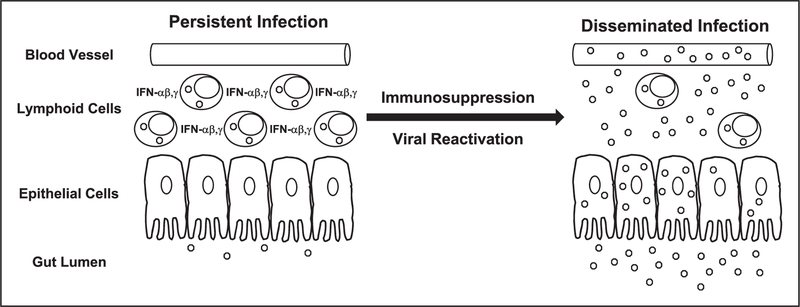FIGURE 1.
Model of HAdV persistence and reactivation in the gut. During initial adenovirus infection, sufficient interferon (IFN)-α, β and γ are produced to create a state of viral persistence. Adenovirus (o) is found primarily in lymphoid cells in the gut but is largely absent from highly permissive epithelial cells. Small amounts of virus are produced and shed in the feces. Chemotherapy-induced immunosuppression depletes IFN producing lymphoid cells and represses IFN expression in residual lymphoid cells and other host cells. Repression of the host IFN response allows increased expression of the viral E1A gene, which, in turn, results in increased viral replication in lymphoid cells and lymphoid tissue-associated epithelial cells that can produce large amounts of virus. This viral amplification can result in increased fecal viral shedding, increased tissue invasion and blood borne dissemination of infection.

